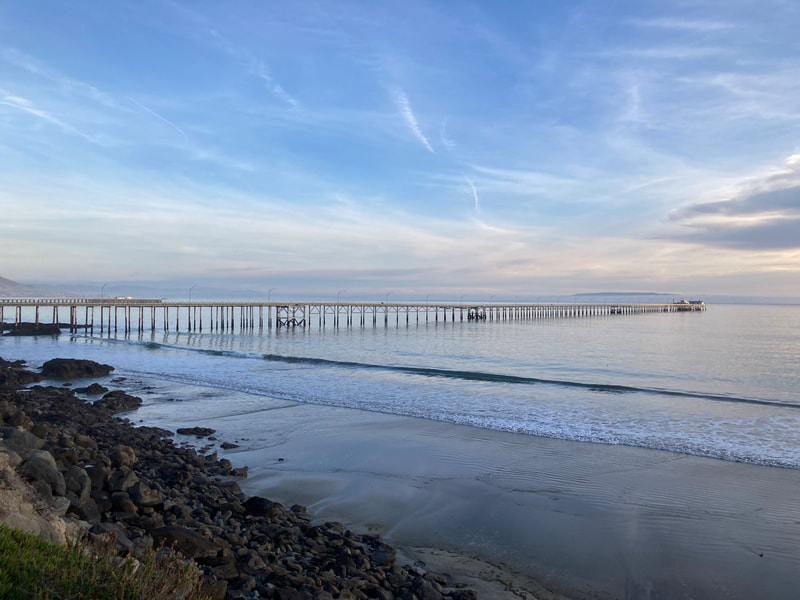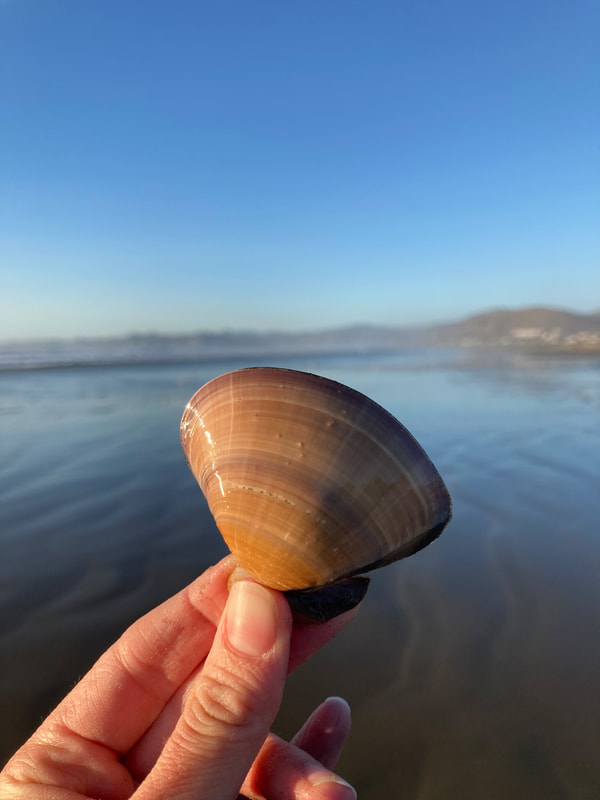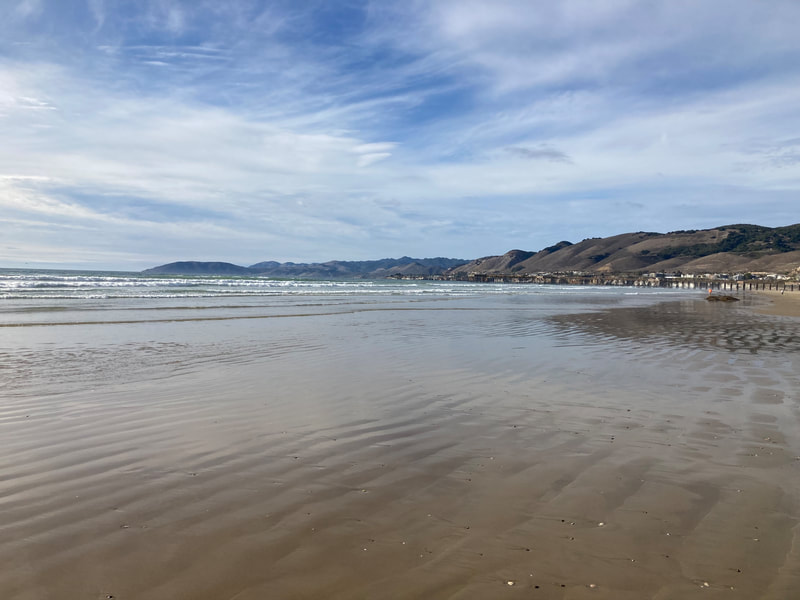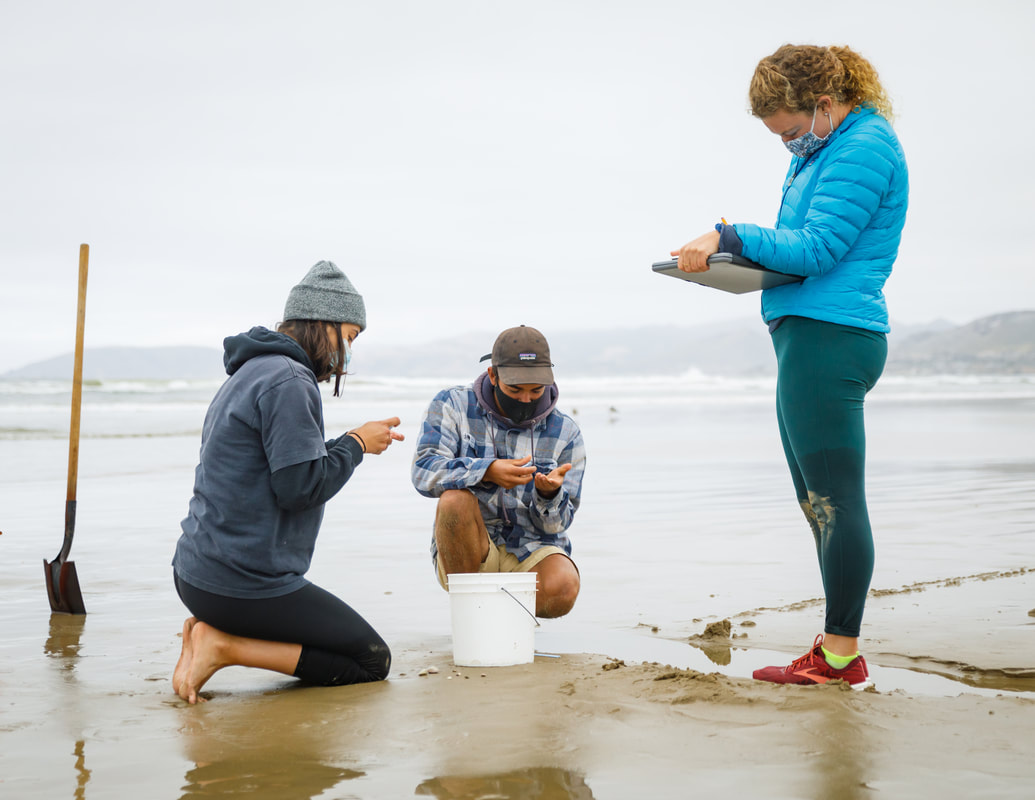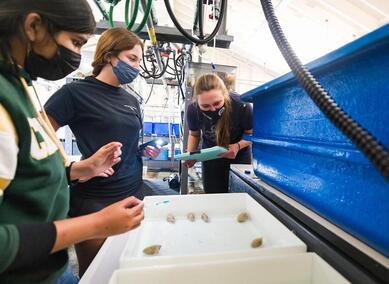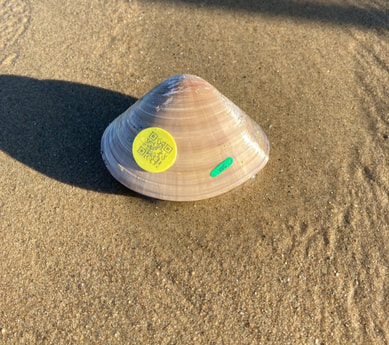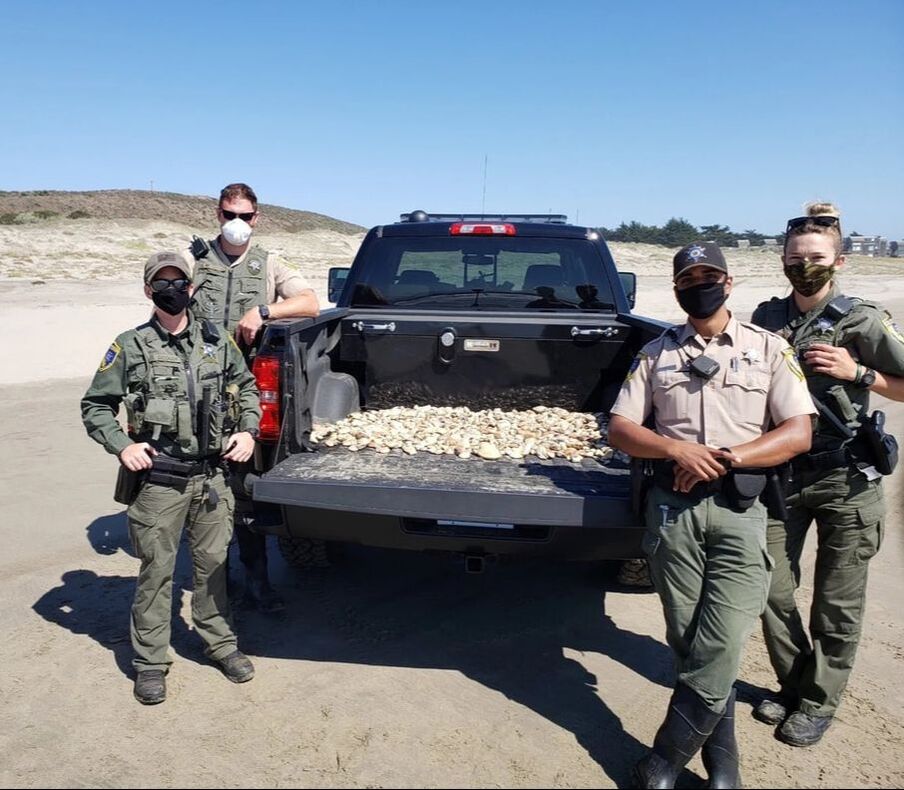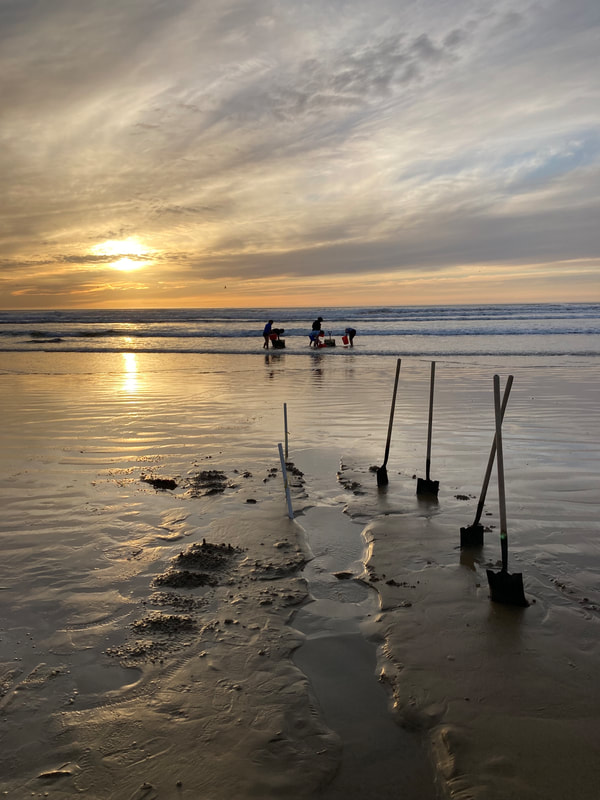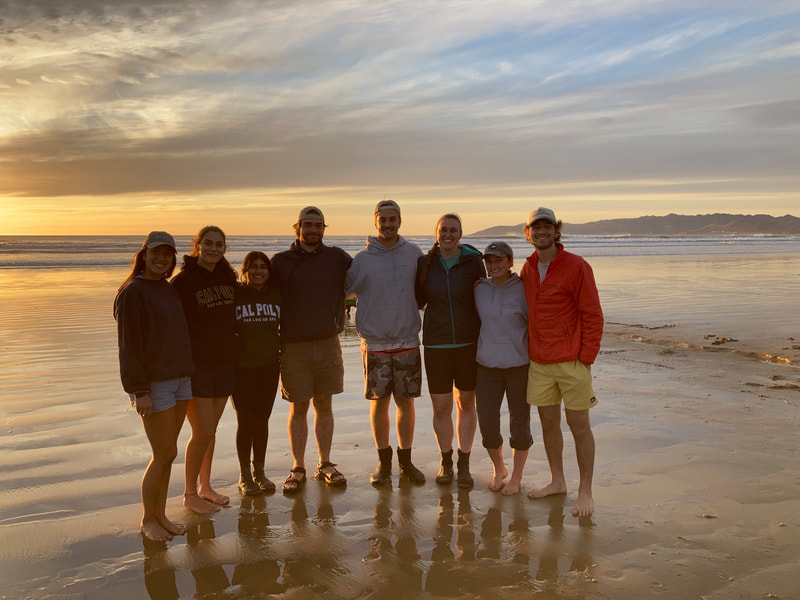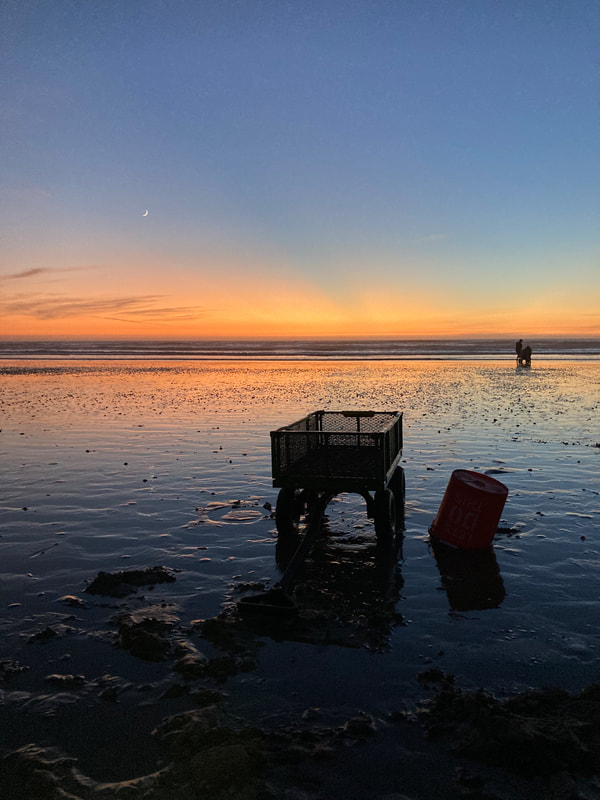Pismo Clams in California: Recovery of an iconic species?
Pismo clams are an iconic species of the California coast, found from Monterey Bay, California to Baja California, Mexico. In California, they are often most abundant on Pismo Beach - right in our backyard here at Cal Poly San Luis Obispo. Pismo clams were harvested in the millions on Pismo Beach and supported important commercial and recreational fisheries for decades. While the commercial fishery closed in 1947, the recreational fishery remained active for nearly another half century. Pismo clam populations on the Central Coast declined in the 1980s and a legal sized Pismo clam (4.5”) has not been found on Pismo Beach since 1993.
Our research aims to understand this decline and provide information to management agencies about the current status of this species and potential pathways for their recovery. This research is made possible by Cal Poly undergraduates, our agency partners, and community support.
We recently published our first paper on Pismo clams, focusing on reproduction, age, and growth, led by lab alum Alex Marquardt as part of her MS degree. Read it here, and read more about our others current projects below!
Our research aims to understand this decline and provide information to management agencies about the current status of this species and potential pathways for their recovery. This research is made possible by Cal Poly undergraduates, our agency partners, and community support.
We recently published our first paper on Pismo clams, focusing on reproduction, age, and growth, led by lab alum Alex Marquardt as part of her MS degree. Read it here, and read more about our others current projects below!
Current Pismo Clam Research
|
Population Status
To understand how Pismo clam populations are changing over time, we conduct monthly surveys on Pismo Beach. We sample from the top of the beach into the intertidal as far as the tide will allow us to get by digging trenches of specific sizes called transects. We count and measure all clams found in each transect and then rebury them on the beach. This monitoring effort began in 2014 and continues today, helping us build a long-term data set. Such a dataset provides us with important information on Pismo clam abundance and size, essential to understanding population trends and informing management. Interested in joining us for a survey? Fill out our volunteer form here Read more about our Pismo clams survey project in the news: KCLU The One Oh One Podcast (April 2022) Monterey Herald (Jan 2022) LA Times (Front Page! 11/2021) Aquaculture Potential
Recently, we have begun examining the aquaculture potential of Pismo clams at the Cal Poly pier marine facility. We are exploring ways to spawn them in captivity and rear their larvae in an effort to develop ways to create baby Pismo clams. If successful, these methods could be used to culture Pismo clams for commercial and/or restoration aquaculture. Learn more about our aquaculture research Community Science - Have you seen this clam?
In the summer of 2021, we started a mark and recapture study for Pismo clams on Pismo Beach. We collect clams, measure them, and tag them with a unique number, metal washer and a QR code. The unique number allows us to identify individuals, and the washer helps us find marked individuals with a metal detector. The QR code allows members of the community to be a part of this study! If you find a clam with a QR code, please scan the code with a smartphone. It will open a short data form; answering a few short questions will help us collect important data! This study will help us understand Pismo clam growth rates, mortality rates, as well as how much they move on the beach. More about this project in the San Luis Obispo Tribune (Oct 2021) Pismo Clam Poaching
Poaching has become an increasingly large problem for Pismo clams on the Central Coast. In 2020, law enforcement officers intercepted over 25,000 poached clams on Pismo Beach alone! We work with the California Department of Fish and Wildlife enforcement division to understand and track Pismo clam poaching. While the recreational fishery is still open for Pismo clams, clams must be over 4.5 inches in San Luis Obispo county and south, and over 5 inches in Monterey County to be collected legally. Additionally, clamming is only permitted between sunrise and sunset, there is a limit of 10 clams per day, and fishers must have a valid fishing license. If you are witnessing poaching, call Cal Tip at (888) 334-2258 to report your sighting to CDFW. Learn more about the state of Pismo clam poaching from KSBY (Aug 2021) |
Want to get involved in our research or learn more?
Contact master’s student Marissa Bills
If you are a Cal Poly undergraduate, we are always looking for more students to get involved in our research!
Email Marissa to learn about current opportunities
Contact master’s student Marissa Bills
If you are a Cal Poly undergraduate, we are always looking for more students to get involved in our research!
Email Marissa to learn about current opportunities
